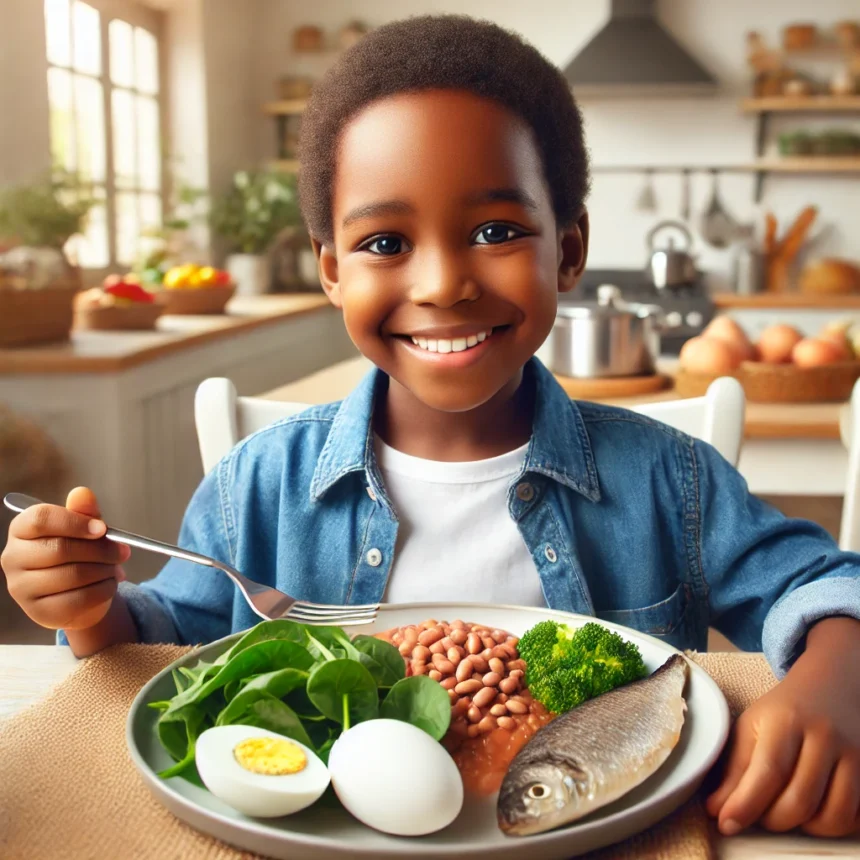Iron is an essential component that promotes a child’s growth, cognitive development, and overall health. It aids in the formation of haemoglobin, the protein in red blood cells responsible for transporting oxygen throughout the body. When children do not consume enough iron, they may develop iron deficiency anaemia, which causes exhaustion, weakness, pale complexion, and difficulties concentrating. Growing children have high iron requirements, so ensuring they get enough through their diet is critical.
MUST READ; Agricultural Business: The New Gold in Africa
Why is iron important for children?
Iron is required for optimal cognitive development, energy production, and immunological function. Children who do not consume enough iron may have fatigue, difficulties concentrating in class, and a weakened immune system, making them more susceptible to diseases. Low levels of iron, which assist oxygen transport in the blood, can have an influence on overall energy and physical activity, which is especially important for energetic children.
How Much Iron Do Kids Need?
A child’s iron requirements vary depending on their age. Babies aged 7 to 12 months require 11 mg per day, while toddlers aged 1-3 years need 7 mg per day. Pre-schoolers and early children (4–8 years old) should have 10 mg per day, whereas older children (9–13 years old) require 8 mg. Teen boys require 11 mg, however teen girls who begin menstruation require more—around 15 mg each day. Ensuring that children obtain the required amount of iron through meals helps to prevent deficiencies and promotes their overall health.
Heme vs. non-heme iron
Dietary iron is classified into two types: heme iron, which is found in animal-based meals, and non-heme iron, which is derived from plant sources. Heme iron is more readily absorbed by the body, making it a more effective source. Non-heme iron, on the other hand, is not as effectively absorbed; however, combining it with vitamin C-rich foods (such as oranges, bell peppers, and strawberries) can dramatically increase absorption.
Best Iron-Rich Foods for Kids
Lean red meat, poultry, and shellfish are good sources of heme iron, making them ideal for kids. Beef, lamb, and liver are very high in iron. Chicken and turkey include moderate levels, as do seafood like tuna, salmon, and shrimp, which contain iron as well as beneficial omega-3 fatty acids. Eggs are another important source of iron and can be easily included in a child’s diet as scrambled eggs, omelettes, or boiled eggs. Plant-based sources of non-heme iron are crucial for youngsters who eat little meat or follow a vegetarian diet. These foods include spinach, lentils, beans, tofu, and fortified cereals. Dark leafy greens such as kale, broccoli, and spinach are wonderful choices, but they should be combined with vitamin C sources to increase absorption. Chickpeas, black beans, and kidney beans are excellent providers of plant-based iron. Additionally, nuts and seeds, such as pumpkin seeds, sesame seeds, and cashews, provide a healthy iron boost. Many breakfast cereals and whole grains are fortified with iron, making them a simple option to boost your daily consumption.
How to Prevent Iron Deficiency in Kids
Include iron-rich foods in your child’s regular meals to ensure he or she gets enough. A balanced diet rich in both heme and non-heme iron sources is ideal. Pairing iron-rich meals with vitamin C, such as adding citrus fruits to a meal, improves absorption. At the same time, calcium intake should be limited during iron-rich meals since calcium might interfere with iron absorption. For example, instead of serving milk alongside iron-rich foods, provide it at a different time of day.
Signs of Iron Deficiency in Children
If a child does not get enough iron, they may have weariness, weakness, pale skin, delayed growth, frequent illnesses, a poor appetite, and trouble concentrating. If you observe any of these symptoms, see a paediatrician, who may recommend dietary adjustments or iron supplementation as needed.
In conclusion, by incorporating iron-rich foods into your child’s diet and making small adjustments to improve absorption, you can help prevent iron deficiency and ensure they stay energetic, focused, and healthy.


